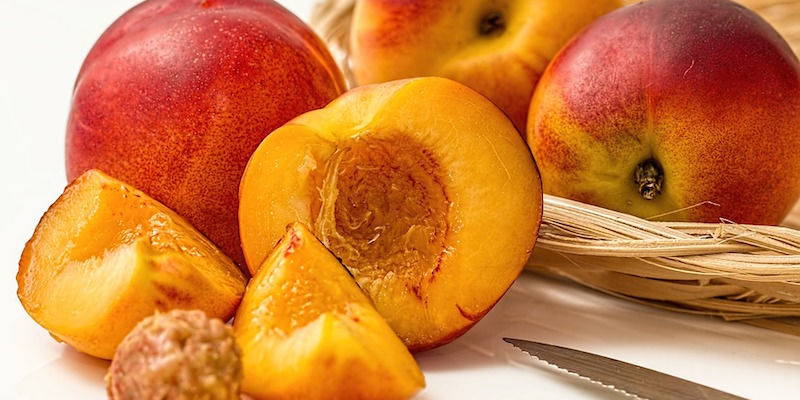Spotlight on Nectarines
Search the fruit section in the grocery – look for orange or orange-red in colour stone fruits, nope not the peaches or plums. Slightly bigger than both of these other stone fruits, a nectarine is best in season in Autumn. The best way to tell the difference between a peach and a nectarine – peaches look more fuzzy while Nectarines have a smoother exterior. In this post, we take a closer look at a few of the health benefits of Nectarines, as well as share some tips on how you can best enjoy this fruit.
Health benefits
Vitamin A Power
The bright orange-red colour of nectarines come from their high beta-carotene content. Beta-carotene is an antioxidant that helps protect the body from damage from free radicals, and also is converted by the body into vitamin A (which helps build & maintain healthy skin, teeth, bone tissue, soft tissue and mucus membranes).
Vitamin C Potency
One medium-sized nectarine contains 8.4g of vitamin C (which helps to repair cartilage, bones & teeth as well as heal wounds). Vitamin C is also known to help prevent cancer, heart disease and some medical conditions such as arthritis.
Fibre
Fresh or dried, nectarines are an excellent source of dietary fibre – adding bulk to your diet, making you feel full on less food, thus reducing the amount of calories you intake. Eating nectarines can also help prevent constipation and help with digestion.
Picking a great nectarine
Look for well-ripen, soft fruit with a smooth surface. Avoid hard, immature nectarines as this indicates they’ve been harvested prematurely and will be off flavoured. Additionally, look out for those that have signs of surface blemishes; are shrivelled; have cracks or puncture marks in them. Similar with pears, it is a natural and acceptable characteristic for nectarines to have russet-brown speckled patches on their surface.
Storage
Keep in a paper bag to hasten the ripening process. A ripe nectarine can perish early and needs to be placed inside the refrigerator but should be brought to room temperature before eating to enjoy their rich natural flavour.
Serving
Gently wash them in cold water before eating, mop dry using soft cloth. Nectarines can be consumed raw along with its skin as in apples, or can be quartered or halved and seeded (separate the pit) using a knife.
Other serving ideas include:
- Slices can be added to fruit salads and desserts.
- The fruit itself could also be used to make jams, jelly and mixed fruit desserts
- Can be used to prepare pie, crumble, soup, tart, cheesecake etc.
